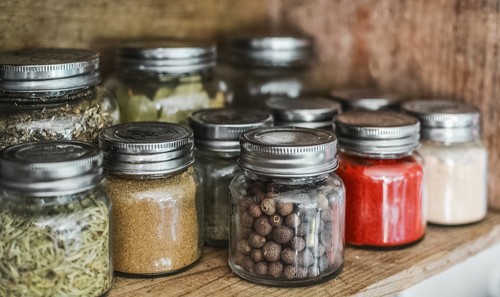© Turkuvaz Haberleşme ve Yayıncılık 2024
As we welcome the last month of summer, it is high time to get our kitchens ready for the days of winter. In Turkish culture, certain foods such as pickles, jams and tomato sauce are prepared for winter as you can find the freshest ingredients for these during the summer months.
Throughout history, mankind has always tried to adapt to the changing seasons. As part of this adaptation, kitchen traditions have played an important role, especially when it comes to surviving cold, harsh winters. To be able to keep their pantries full throughout the cold months, people prepare for winter during the summer and fall, when crucial vegetables and fruits can be bought fresh and at lower prices. Although these methods vary from region to region according to climate, the basic concept of winterizing the kitchen remains the same.
Back in the old days, people would gather nearly all vegetables on the spectrum; especially peppers, tomatoes, eggplants and beans grown locally, drying them under the summer sun. Moreover, tomato and pepper sauces and pastes were prepared and stored in glass jars in a process known as canning.
Over time, especially with the rise of urbanization, this tradition shifted to include canning of fresh summer fruits and vegetables. It is also common to prepare "erişte," a type of homemade Turkish noodles, as well as "tarhana soup," a mixture of sun-dried curd, tomato and flour, packaged and stored during the summer months.

There are five ways to prepare your pantry for winter in the city:
1. Drying (fruits, pepper, mint, etc.)
2. Freezing (nearly everything can be frozen)
3. Canning (vegetables and fruits)
4. Fermenting (pickles)
5. Saccharification
The main idea behind these methods is to reduce the effect of air on foods, which is known to spoil fruits and vegetables. Here are some of the preparation methods you can use to easily prepare your kitchen for winter:
Make fruit preserves
The sweetest way to winterize your kitchen is to can your own fresh, summer fruits in airtight, glass jars. If you want to make jam at home, simply cut your selected fruits in large chunks or even leave them whole. Put the fruits into a saucepan over medium to low heat and add sugar. All you need to do is to wait until the fruits liquefy. On the other hand, if you prefer marmalade in winter, simply follow the exact same steps as you would to make jam, only cook the selected fruits with sugar until it is of a pasty consistency. Strawberry, cherry and plum jams and marmalade are the most popular to prepare for winter in Turkey. Although you can sometimes find these fruits during chilly weathers thanks to local greenhouses, canning and preserving are the best ways to preserve the fresh fruits of the previous season.
Dried vegetables
If you enjoy meals cooked with dry vegetables, this is your chance to shine. Dried mint, basil and thyme are delicious and can easily be made at home when dried in a dark, moisture-free environment lying the leaves on a flat surface. By drying greens, you can also preserve their delicious smell throughout winter, as well. On the other hand, eggplants, okra and sweet green pepper also have incredible flavors when they are dried. It is best to dry these veggies by hanging them up on a string and letting the sun suck the juice out of them.
Canned tomatoes
Find the best tomatoes in your market because it is time to make same tomato sauce for the winter. Since the best and freshest tomatoes can be found in your local market during the summer months, it is usually advised to make tomato sauce during the hot summer days or at the beginning of fall. Cut each tomato into four or five pieces and put them into large bowls or plastic bottles filled with salt. After waiting three days, remove the tomatoes and squeeze out the juices using a strainer. When you have finished, let the tomatoes dry on large trays for three to four days. If you are living in the city in an apartment without a balcony, just place the tray in front of a window for sunlight; this will work just as well. When the drying part is over, put the tomatoes into glass jars and close the lids as tightly as you can.
Frozen fruits and vegetables
For people who work every day, the freezer is the best helper for setting the table as quickly as possible. Freezing certain veggies, fruits or legumes is not just a part of winter preparation in your kitchen - by freezing certain foods, you can also reduce the amount of time you spend cooking. There are two options for freezing your favorite foods: Either freeze the food in raw form or boil it first before cooling and placing in the freezer. For instance, chickpeas are delicious when cooked, cooled and frozen. Simply cook them and once they are cool, place them in freezer bags. When you decide to cook chickpeas, take them out of the freezer and simply add all ingredients needed according to your favorite recipe, add water in a saucepan and cook the chickpeas for 15 to 20 minutes. Since your chickpeas are already cooked, this is an easy and quick way to prepare a meal for dinner.
